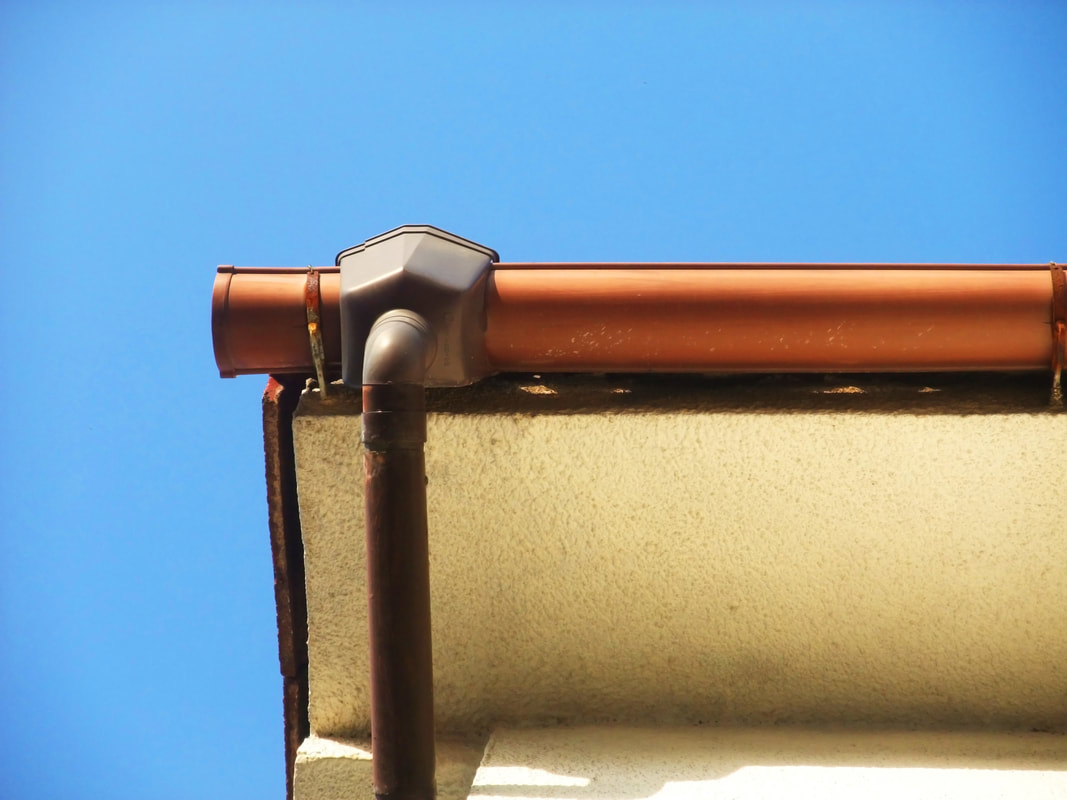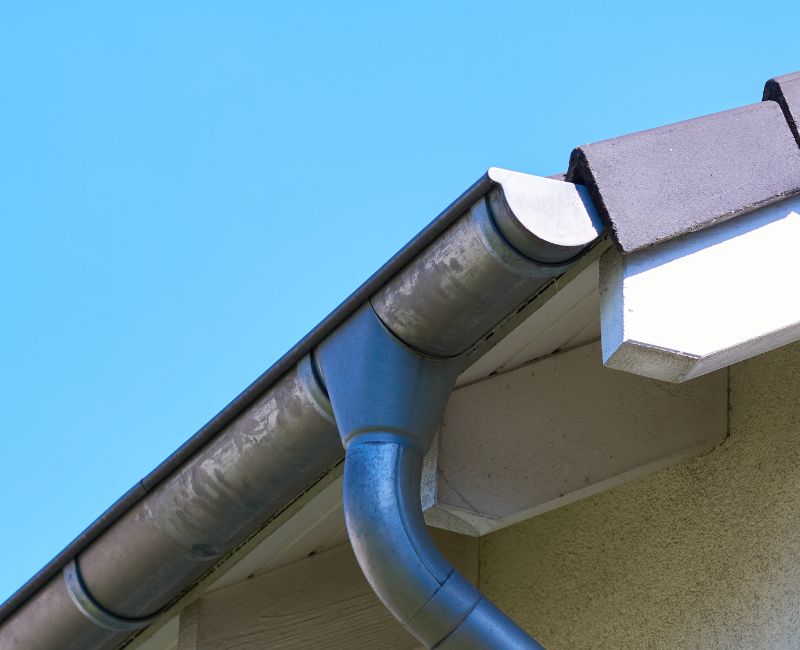Gutters are an essential part of your home’s exterior, protecting your roof, foundation, and landscaping by directing rainwater away from your property. But like all things exposed to the elements, gutters have a limited lifespan. As a homeowner, understanding how long your gutters will last—and what factors impact their longevity—can help you plan for maintenance and replacement, avoiding costly repairs due to water damage.
In this guide, we’ll explore the average lifespan of different types of gutters, what affects their durability, and how you can extend their life with proper care.
Average Lifespan of Gutters
The lifespan of your gutters depends on the material they’re made from, local weather conditions, and how well they’re maintained. Here’s a general breakdown of how long different types of gutters last:
- Aluminum Gutters:
Lifespan: 20-30 years
Aluminum is one of the most popular materials for gutters due to its lightweight nature, resistance to rust, and relatively low cost. With proper maintenance, aluminum gutters can last for decades, though they may be prone to denting in areas with heavy storms or falling debris. - Copper Gutters:
Lifespan: 50 years or more
Copper gutters are durable, corrosion-resistant, and naturally develop a patina that helps protect them from the elements. While they are more expensive upfront, their longevity makes them a good investment for homeowners seeking a long-lasting solution. - Steel Gutters (Galvanized or Galvalume):
Lifespan: 20-30 years
Galvanized steel gutters are coated with a layer of zinc to prevent rust, but over time, the coating can wear off, especially in areas with harsh weather. Galvalume steel, which is coated with a combination of zinc and aluminum, offers additional protection and can extend the life of the gutters. - Vinyl Gutters:
Lifespan: 10-20 years
Vinyl gutters are affordable and easy to install, but they’re more susceptible to damage from extreme temperatures and weather conditions. In colder climates, they can become brittle and crack, while hot weather can cause them to warp. - Zinc Gutters:
Lifespan: 30-50 years
Zinc gutters are highly durable and resistant to rust and corrosion. They develop a patina over time, which acts as a protective barrier, making them an excellent long-term investment. Zinc gutters are often favored for their ability to last many decades with minimal maintenance.

Factors That Affect Gutter Longevity
While the material of your gutters plays a significant role in their lifespan, several external factors can also affect how long they last. Here are the key considerations:
1. Weather and Climate
- Extreme Temperatures:
Extreme heat and cold can cause gutters, especially vinyl and aluminum, to expand and contract, which can lead to cracking, warping, or loosening over time. - Heavy Rainfall or Snow:
Areas with frequent or heavy rain put added stress on gutters, requiring them to carry large volumes of water. Snow and ice can be especially damaging, as the melting water may freeze again, creating ice dams that can block gutters and cause them to sag or detach. - Wind and Storms:
High winds and stormy weather can loosen gutters, cause them to pull away from the fascia, or even damage the gutters themselves. Tree branches and debris carried by strong winds can also contribute to wear and tear.
2. Regular Maintenance
The more you maintain your gutters, the longer they’ll last. Cleaning out debris, removing leaves, twigs, and dirt, and inspecting the system for leaks or cracks regularly can prevent water damage and ensure the system functions correctly. Blocked gutters lead to water overflow, which can result in erosion, foundation problems, and rot.
- Clogging:
Clogs can cause water to pool and overflow, leading to rust and corrosion in metal gutters or cracking in vinyl ones. - Cleaning Schedule:
Clean your gutters at least twice a year—once in the spring and once in the fall— or more often if your home is surrounded by trees. Install gutter guards to reduce the amount of debris that enters the system, lowering maintenance needs.
3. Gutter Installation Quality
Improper installation can significantly shorten the lifespan of your gutters. If gutters are not securely fastened, sloped correctly, or sized appropriately for the size of your home and roof, they may become inefficient and fail prematurely.
- Gutter Slope:
Gutters need to be installed with a slight slope toward the downspouts to allow for proper water drainage. If gutters are not angled correctly, they may overflow or develop standing water, leading to deterioration. - Quality of Materials and Workmanship:
The quality of both the materials used and the workmanship of the installation team can influence the longevity of your gutters. Poor-quality materials or shoddy installation techniques may result in premature wear or failure.
4. Tree Overhangs and Debris
Trees near your home can contribute significantly to the wear and tear on your gutters. Overhanging branches drop leaves, twigs, and other debris into your gutters, leading to clogs and damage. Leaves that get stuck in gutters can also retain moisture, causing gutters to rust or degrade more quickly.
- Tree Maintenance:
Trim trees regularly to keep branches from overhanging your gutters, or consider installing a leaf guard system to minimize debris buildup.
Signs That It’s Time to Replace Your Gutters
Even if your gutters are made from a durable material, age and damage can eventually catch up with them. Here are some signs that it may be time to replace your gutters:
- Frequent Repairs:
If your gutters are constantly requiring repair (cracks, holes, rust spots), it may be more cost-effective to replace them entirely. - Sagging or Pulling Away:
If your gutters are sagging or detaching from the fascia, it’s a sign that they’re no longer structurally sound. - Water Damage to Exterior or Foundation:
If you notice water stains, mold, or erosion around the foundation or walls, your gutters may not be effectively diverting water away from your home. - Cracks, Holes, or Rust:
Visible damage to your gutters, such as holes, cracks, or extensive rusting, is an indication that your gutter system is compromised. - Clogging Issues:
If your gutters are regularly clogged despite cleaning efforts, it could mean that the system has outlived its usefulness and needs replacing.

How to Extend the Life of Your Gutters
To get the most out of your gutter system and maximize its lifespan, follow these maintenance tips:
- Clean gutters regularly to remove debris and prevent clogging.
- Inspect gutters for damage at least twice a year and after severe storms.
- Install gutter guards to reduce the buildup of leaves and debris.
- Trim overhanging branches to prevent tree limbs from dropping debris into the gutters.
- Fix minor issues promptly to prevent them from turning into major problems.

Final Thoughts
Your gutters are essential to keeping your home safe from water damage, and understanding how long they’ll last can help you plan for necessary replacements and maintenance. Depending on the material, gutters can last anywhere from 10 to 50 years. Regular care and maintenance can extend their lifespan and prevent costly water damage to your home’s foundation, roof, and landscaping. If your gutters are showing signs of aging or damage, it may be time to consider replacement to keep your home safe and secure.

